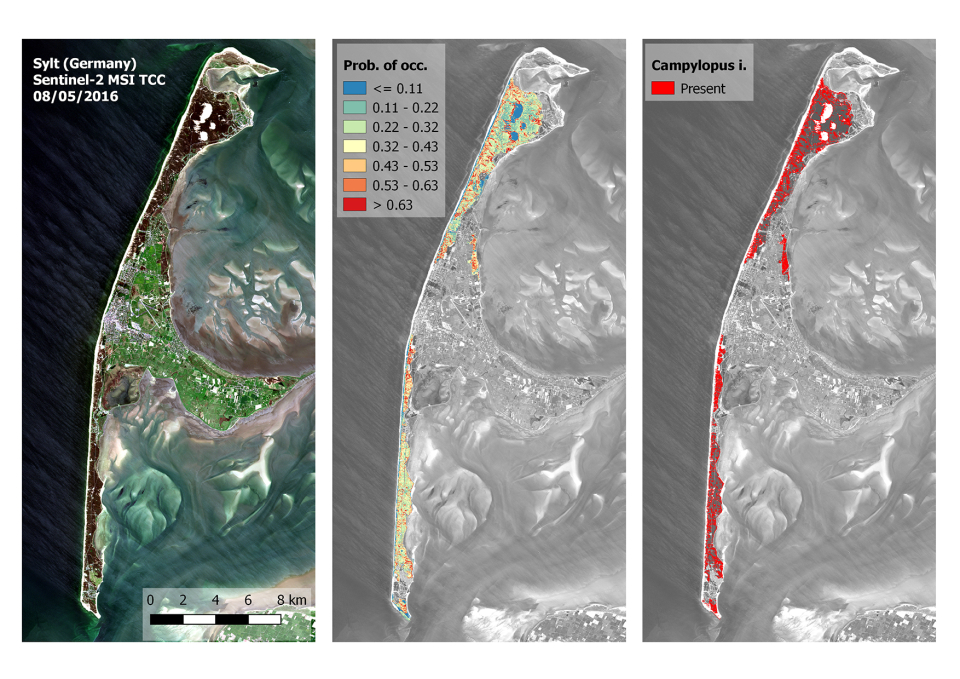Published on 21 May 2019
On the occasion of the International Day of Biodiversity, we are putting the DIARS project in the spotlight. A small acronym for a project with a title as imposing as its ambitions: Detection of Invasive plant species and Assessment of their impact on ecosystem properties through Remote Sensing.
Invasive species (also known as invasive alien species or IAS) are living organisms (animals, plants or microorganisms) introduced voluntarily or involuntarily outside their natural range and which adapt so well to their new environment that they eventually displace native species and colonize new habitats.
These invasive phenomena have increased significantly in recent decades with the increase in global trade. Invasive species are now considered to be the second most important cause of biodiversity loss, after the disappearance and fragmentation of natural habitats.
Convinced that diversity is as beneficial in research as it is in nature, the promoters of the DIARS project decided to bring together researchers specialising in remote sensing and ecology from several European countries in order to develop tools crucial for early warning and rapid intervention systems in the event of biological invasion.
Before measures can be taken against an invasion, it is necessary to determine its extent, propagation dynamics and likely impact on the ecosystems present. Traditionally, mapping the distribution of invasive plants has been based on field data collection. While these field data remain fundamental, the complementary use of remote sensing data allows us to gain height and to have a systematic, objective and synoptic view of the vegetation cover. As these data are geo-referenced, they make it possible to move from point observations to continuous maps of ecosystem distribution and functioning, which is a major step towards better management of invasive alien species.

One of the sites studied by the project is the island of Sylt, the northernmost of the German Wadden Islands in the North Sea. The illustration above shows, on the left, the site as seen by Sentinel-2, in the centre the probability map of occurrence of the invasive species Campylopus introflexus (a moss) based on hyperspectral data and on the right a presence map obtained by field surveys. According to the model developed, C. introflexus has already invaded more than a quarter of the island's surface area. The most affected areas are dune grasslands.
The DIARS project focused on studying 3 invasive plant species (one moss species, one shrub species and one tree species) in two ecosystem types (dune habitats or forest stands) located in 3 sites in Belgium, France and Germany.
In all 3 cases, by combining field data with APEX hyperspectral images and LiDAR data, researchers were able to assess the distribution and spread of invasive plants, as well as their impact on ecosystem functioning. In the particular case of C. introflexus (see illustration), the project demonstrated the potential of hyperspectral images to provide reliable information on the degree of invasion by small invasive species. This discovery therefore offers an alternative to traditional field mapping methods over large areas.
In addition, they have developed a toolbox containing open-source codes, data sets and tutorials to help the scientific community become familiar with this type of study.
You can find the DIARS toolbox, as well as other free tools developed by STEREO researchers on the LUMOS STEREO toolbox page.
More information:


